 Technology peripherals
Technology peripherals
 AI
AI
 The real hero behind ChatGPT: OpenAI chief scientist Ilya Sutskever's leap of faith
The real hero behind ChatGPT: OpenAI chief scientist Ilya Sutskever's leap of faith
The real hero behind ChatGPT: OpenAI chief scientist Ilya Sutskever's leap of faith
The emergence of ChatGPT has attracted much attention, but we should not forget the unknown genius behind it. Ilya Sutskever is the co-founder and chief scientist of OpenAI. It was under his leadership that OpenAI made significant progress in developing cutting-edge technologies and advancing the field of artificial intelligence.
In this article, we will explore how Sutskever went from a young researcher to one of the leading figures in the field of artificial intelligence in two decades. Whether you are an AI enthusiast, a researcher, or simply someone curious about the inner workings of this field, this article will provide valuable perspective and information.
This article follows the following timeline:
2003: Ilya Sutskever’s apprenticeship journey
2011: First introduction to AGI
2012: The revolution in image recognition
2013: Auction of DNNresearch to Google
2014: The revolution in language translation
2015: From Google to OpenAI: The new era of artificial intelligence Chapter
2018: GPT 1, 2 and 3
2021: Development of DALL-E 1
2022: Unveiling ChatGPT to the world
Ilya Sutskever
Co-founder and chief scientist of OpenAI, graduated from the University of Toronto in 2005 and received a CS degree in 2012 Ph.D. From 2012 to the present, he has worked at Stanford University, DNNResearch, and Google Brain, conducting research related to machine learning and deep learning. In 2015, he gave up his high-paying position at Google and co-founded OpenAI with Greg Brockman and others. Developed GPT-1, 2, 3 and DALLE series models. In 2022, he was elected as a fellow of the Royal Society of Science. He is a pioneer in the field of artificial intelligence who has been instrumental in shaping the current landscape of artificial intelligence and continues to push the boundaries of what is possible with machine learning. His passion for artificial intelligence has informed his groundbreaking research, which has shaped the development of the fields of deep learning and machine learning.
2003: First impression of Ilya Sutskever

Sutskever: I don’t understand. Hinton: Why don’t you understand? Sutskever: People train neural networks to solve problems. When people want to solve different problems, they have to start training again with another neural network. But I think people should have a neural network that can solve all problems.
When he was an undergraduate at the University of Toronto, Sutskever wanted to join Professor Geoffrey Hinton’s deep learning laboratory. So, he knocked on the door of Professor Hinton's office one day and asked if he could join the laboratory. The professor asked him to make an appointment in advance, but Sutskever didn't want to waste any more time, so he immediately asked: "How about now?"
Hinton realized that Sutskever was a keen student, so he gave He had two papers for him to read. A week later, Sutskever returned to the professor's office and told him he didn't understand.
"Why don't you understand?" the professor asked.
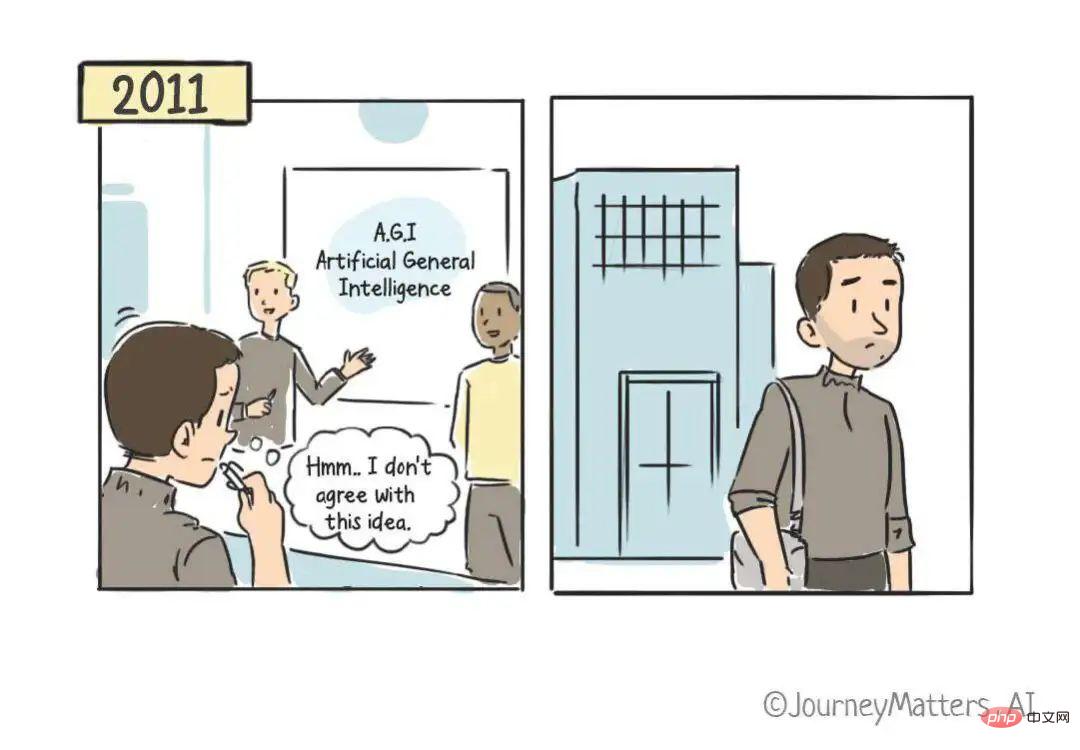 ##“People train neural networks to solve problems, and when people want to solve a different problem, they have to start over with another neural network. But I think people should have a neural network that can solve all problems."
##“People train neural networks to solve problems, and when people want to solve a different problem, they have to start over with another neural network. But I think people should have a neural network that can solve all problems."
This passage demonstrates Sutskever's unique ability to draw conclusions, and this With abilities that would take even experienced researchers years to find, Hinton extended an invitation to join his lab.
######2011: First acquaintance with AGI############################# Sutskever: Me Don’t agree with this idea (AGI)#########When Sutskever was still at the University of Toronto, he flew to London to find a job at DeepMind. There he met Demis Hassabis and Shane Legg (co-founders of DeepMind), who were building AGI (Artificial General Intelligence). AGI is a general artificial intelligence that can think and reason like humans and complete various tasks related to human intelligence, such as understanding natural language, learning from experience, making decisions, and solving problems.
At the time, AGI was not something serious researchers would talk about. Sutskever also felt they had lost touch with reality, so he turned down the job, went back to college, and eventually joined Google in 2013.
2012: Image Recognition Revolution
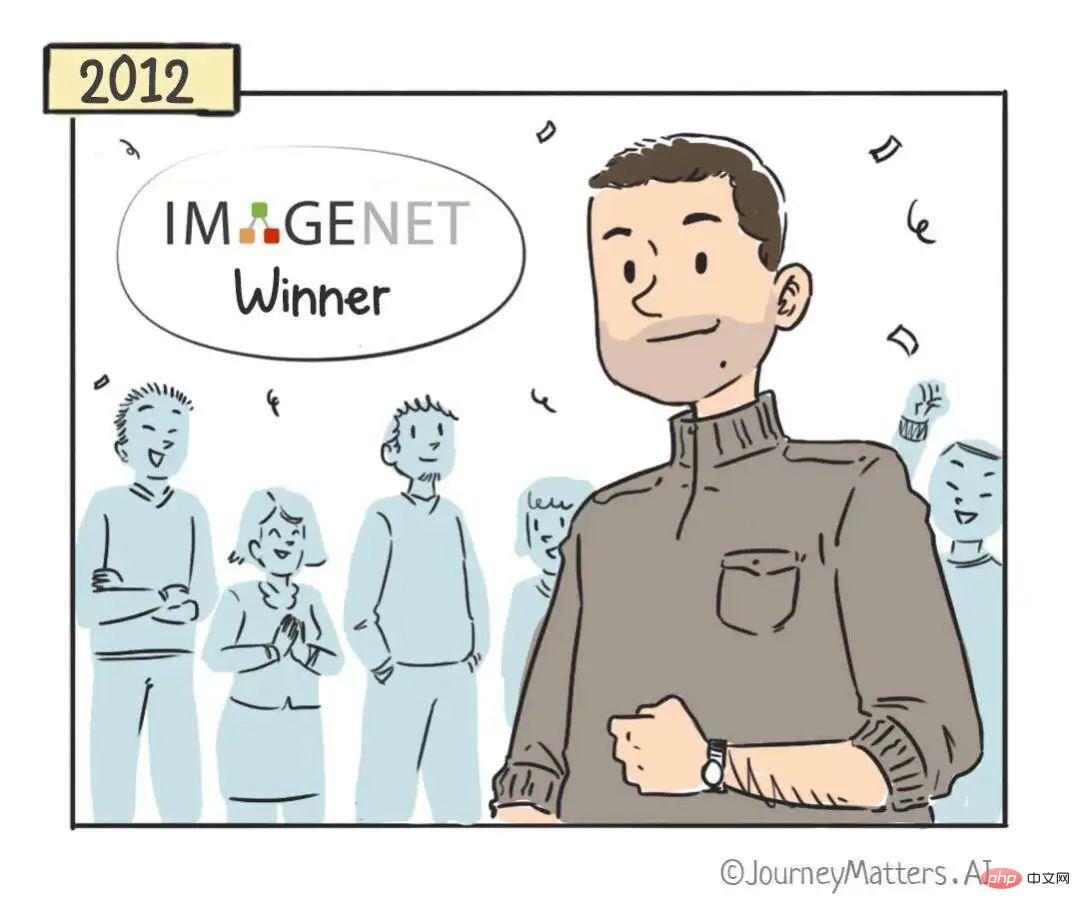
Winning the ImageNet competition
Geoffrey Hinton has a unique vision and believed in deep learning when others did not. And he firmly believes that success in the ImageNet competition will settle this debate once and for all.
ImageNet Competition: The Stanford University Laboratory holds the ImageNet Competition every year. They provide contestants with a massive database of carefully labeled photos, and researchers from around the world come to compete to try to create a system that can recognize the most images.
Two of Hinton’s students, Ilya Sutskever and Alex Krizhevsky, participated in this competition. They broke the traditional manual design scheme, adopted a deep neural network, and broke through the 75% accuracy mark. So they won the ImageNet competition and their system was later named AlexNet.
Since then, the field of image recognition has taken on a completely new look.
Later, Sutskever, Krizhevsky, and Hinton published a paper on AlexNet, which became one of the most cited papers in computer science, cited by a total of other researchers More than 60,000 times.
2013: Auction of DNNresearch to Google
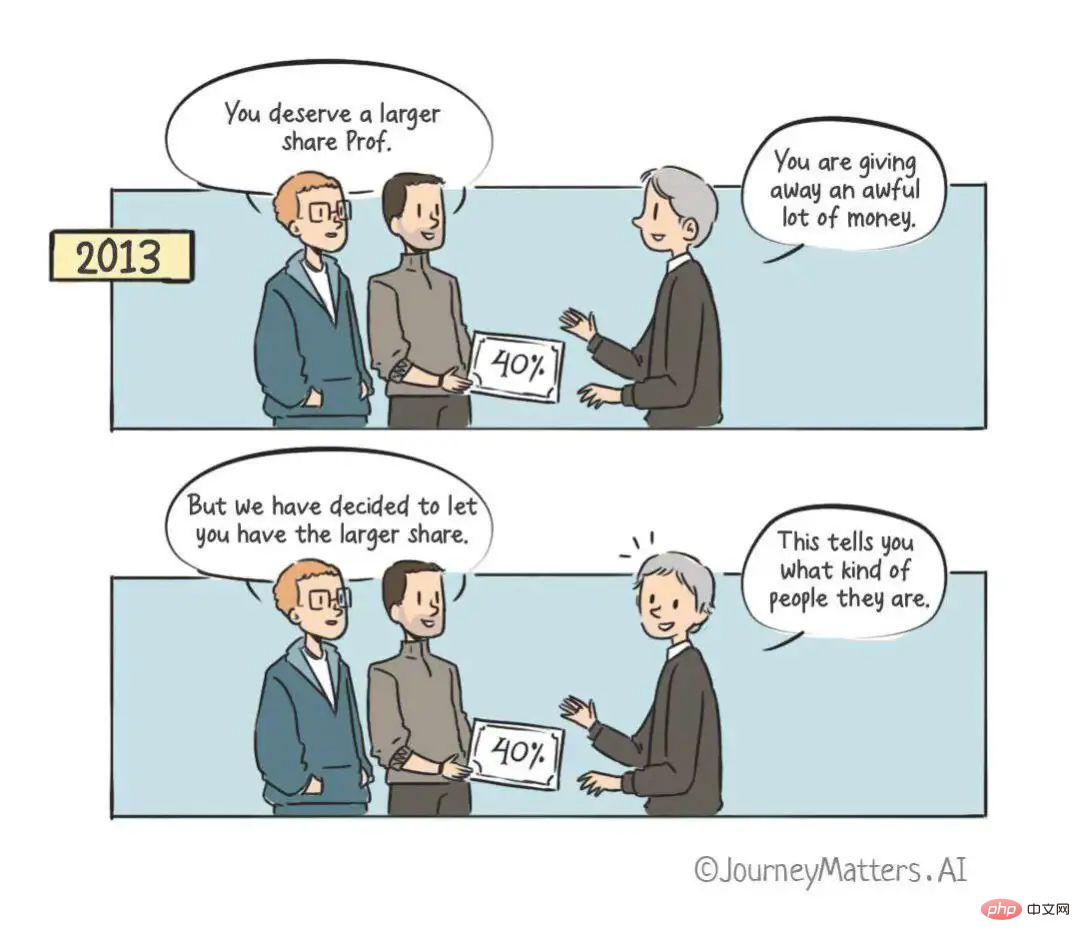
##Sutskever&Krizhevsky : You deserve a greater percentage of your dividends. Hinton: You're sharing too much of my money. Sutskever&Krizhevsky: But we have already decided to give you the lion’s share. Hinton: It speaks to their character.
Hinton, together with Sutskever and Krizhevsky, formed a new company called DNNresearch. They don't have any products and have no plans to build any in the future.
Hinton asked the lawyer how to maximize the value of his new company, even though it currently only has three employees, no products, and no foundation. One of the options the lawyer gave him was to set up an auction. Four companies were involved in the acquisition: Baidu, Google, Microsoft and DeepMind (then a young startup based in London). The first to exit was DeepMind, followed by Microsoft, and finally only Baidu and Google were left competing.
By close to midnight one night, the auction price was as high as $44 million, and Hinton paused the bidding and went to sleep. The next day, he announced that the auction was over and sold his company to Google for $44 million, deciding that finding the right home for his research was more important. At this point, Hinton, like his students, puts their ideas ahead of financial gain.
When it came time to split the proceeds, Sutskever and Krizhevsky insisted that Hinton should get a larger share (40%), even though Hinton suggested that they might as well get some sleep. The next day, they still insisted on this distribution method. Hinton later commented: "It reflects who they are as people, not me."
After that, Sutskever became a research scientist at Google Brain. His ideas changed even more and began to gradually align with those of the founder of DeepMind. He began to believe that AGI's future was right in front of him. Of course, Sutskever himself has never been afraid to change his mind in the face of new information or experience. After all, believing in AGI requires a leap of faith, As Sergey Levine (Sutskever’s colleague at Google) commented on Sutskever: "He is a man who is not afraid to 'believe.'"
2014: The Revolution in Language Translation
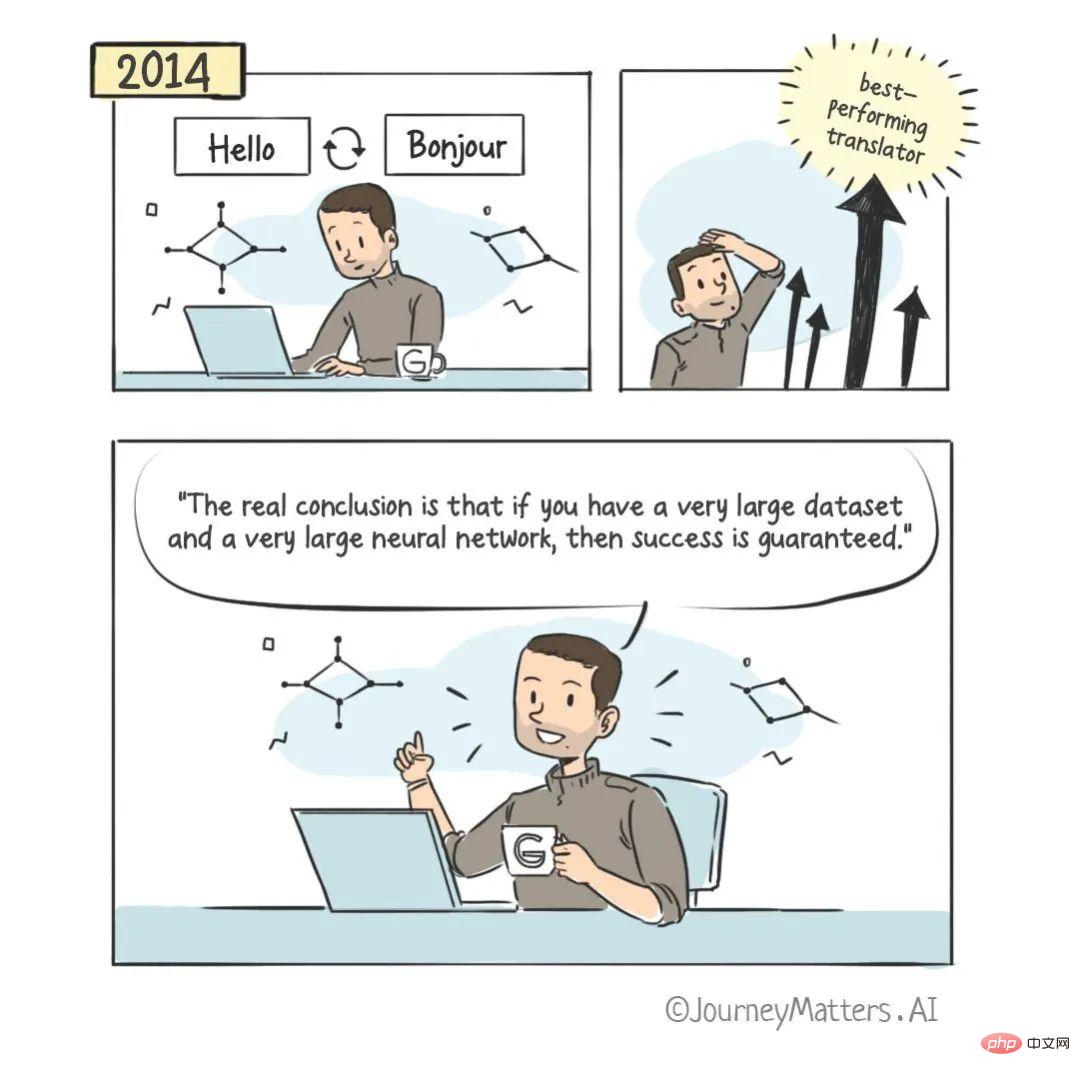
Sutskever: The correct conclusion is that if you have a very large data set and a very large neural network, then success is inevitable. (The best performing translator)
After acquiring DNNResearch, Google hired Sutskever as a research scientist at Google Brain.
While working at Google, Sutskever invented a variant of a neural network that could translate English into French. He proposed "Sequence to Sequence Learning", which captures the sequence structure of the input (such as an English sentence) and maps it to an output that also has a sequence structure (such as a French sentence).
He said the researchers didn't believe neural networks could translate, so it was a big surprise when they actually did. His invention beats the best-performing translators and provides a major upgrade to Google Translate. Language translation will never be the same again.
2015: From Google to OpenAI: A new chapter in artificial intelligence
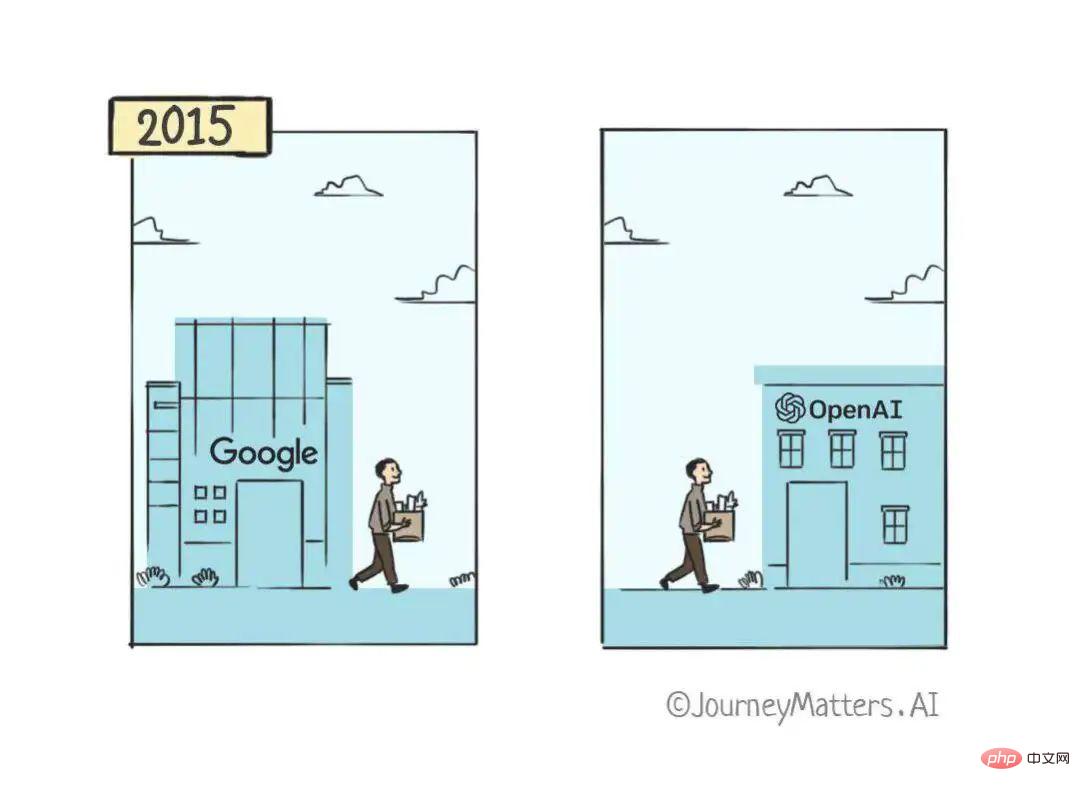
Sam Altman and Greg Brockman brought Sutskever and nine other researchers together to see if it was still possible to form a research lab with the best minds in the field. When discussions began about the lab that would become OpenAI, Sutskever realized he had found a group of like-minded people who shared his beliefs and aspirations.
Brockman extended invitations to the 10 researchers to join his lab and gave them three weeks to decide. When Google found out about this, they offered Sutskever a substantial amount of money to join them. After being rejected, Google increased their salary to nearly $2 million in the first year, which was two or three times what OpenAI was paying him.
But Sutskever happily passed up a multimillion-dollar job offer at Google to eventually become a co-founder of the nonprofit OpenAI.
OpenAI’s goal is to use artificial intelligence to benefit all mankind and advance artificial intelligence in a responsible manner.
2018: Development of GPT 1, 2 & 3

Led by Sutskever OpenAI invented GPT-1, which was subsequently developed into GPT-2, GPT-3 and ChatGPT.
GPT (Generative Pre-trained Transformer) model is a series of language models based on neural networks. Every update of the GPT model is a breakthrough in the field of natural language processing.
- GPT-1 (2018) : This is the first model in the series, trained on a large-scale Internet text dataset. One of its key innovations is the use of unsupervised pre-training, where the model learns to predict words in a sentence based on the context of preceding words. This enables the model to learn language structures and generate human-like text.
- GPT-2 (2019) : In GPT- 1, it was trained on a larger data set, resulting in a more powerful model. One of the major advancements of GPT-2 is its ability to generate coherent and fluent text passages on a wide range of topics, making it a key player in unsupervised language understanding and generation tasks.
- ##GPT-3 (2020):GPT-3 is a substantial leap forward in both scale and performance. It was trained on a massive dataset using 175 billion parameters, much larger than previous models. GPT-3 achieves state-of-the-art performance on a wide range of language tasks, such as question answering, machine translation, and summarization, with near-human capabilities. It also shows the ability to perform simple coding tasks, write coherent news articles, and even generate poetry.
- GPT-4: Expected to appear soon, expected to be 2023.
2021: Development of DALL-E 1
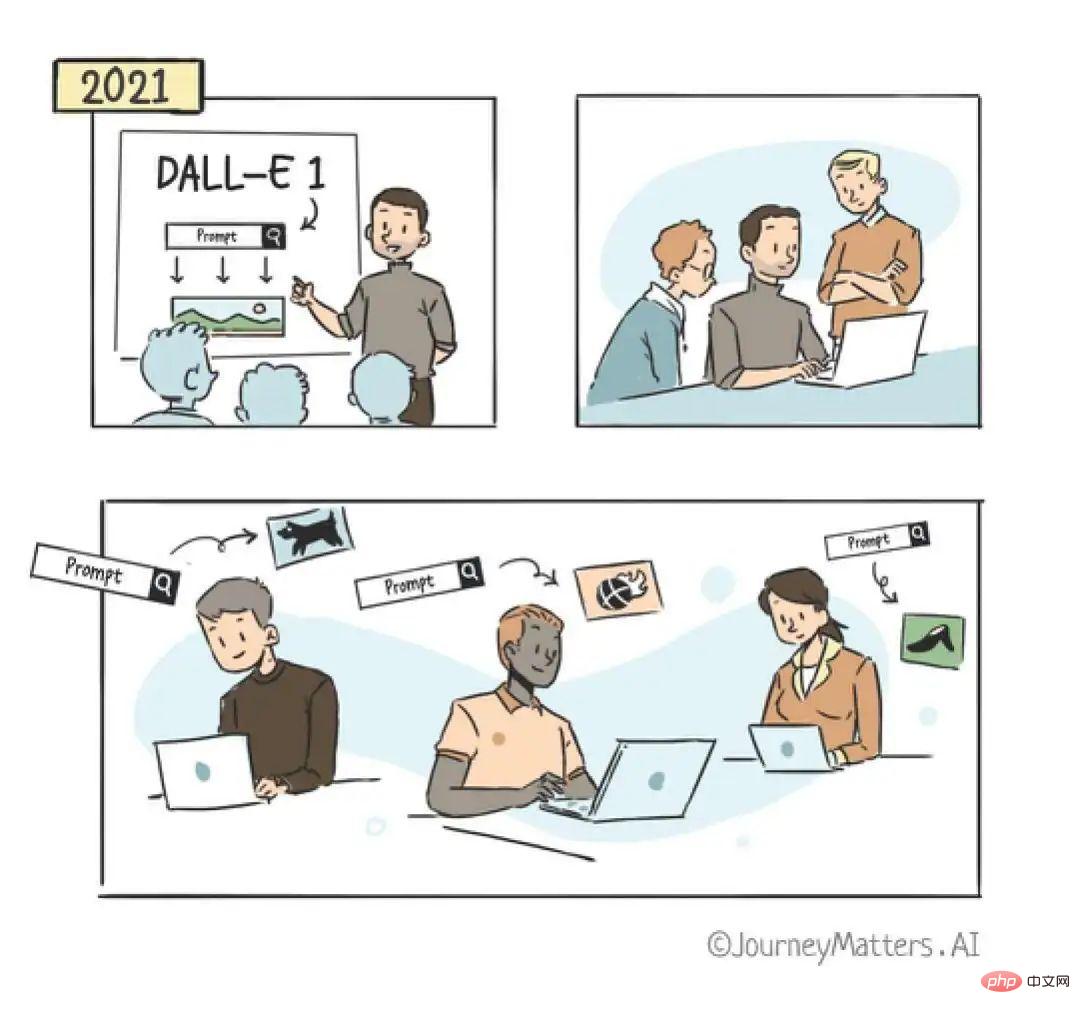
Many of today's major image generators - DALL-E 2, MidJourney - owe their roots to DALL-E 1, as they are based on the same transformer architecture and work on similar Training is performed on image datasets and related text descriptions. In addition, both DALL-E 2 and MidJourney are based on the fine-tuning process of DALL-E 1.
2022: Unveiling ChatGPT to the world

ChatGPT works by pre-training a deep neural network on a large text dataset and then fine-tuning it on a specific task, such as answering questions or generating text. It is a conversational artificial intelligence system based on the GPT-3 language model.
Understanding the context of a conversation and generating appropriate responses is one of ChatGPT’s primary features. The bot remembers your conversation threads and makes follow-up responses based on previous questions and answers. Unlike other chatbots, which are often limited to pre-programmed reactions, ChatGPT can generate reactions within the app, allowing it to have more dynamic and diverse conversations.
Elon Musk is one of the founders of OpenAI. He said:
"ChatGPT is terrifyingly good. We are not far away from dangerously powerful artificial intelligence. ". Endnotes
Ilya Sutskever’s passion for artificial intelligence drove his groundbreaking research that changed the course of the field. His work in deep learning and machine learning has been instrumental in advancing the state of the art and shaping the future direction of the field.We have also witnessed firsthand the impact of Sutskever’s work in the field of artificial intelligence. He has changed the course of the field and will continue to work in this direction. Despite facing material temptations many times, Sutskever chose to pursue his passion and focus on his research; his dedication to his work is exemplary for any researcher. 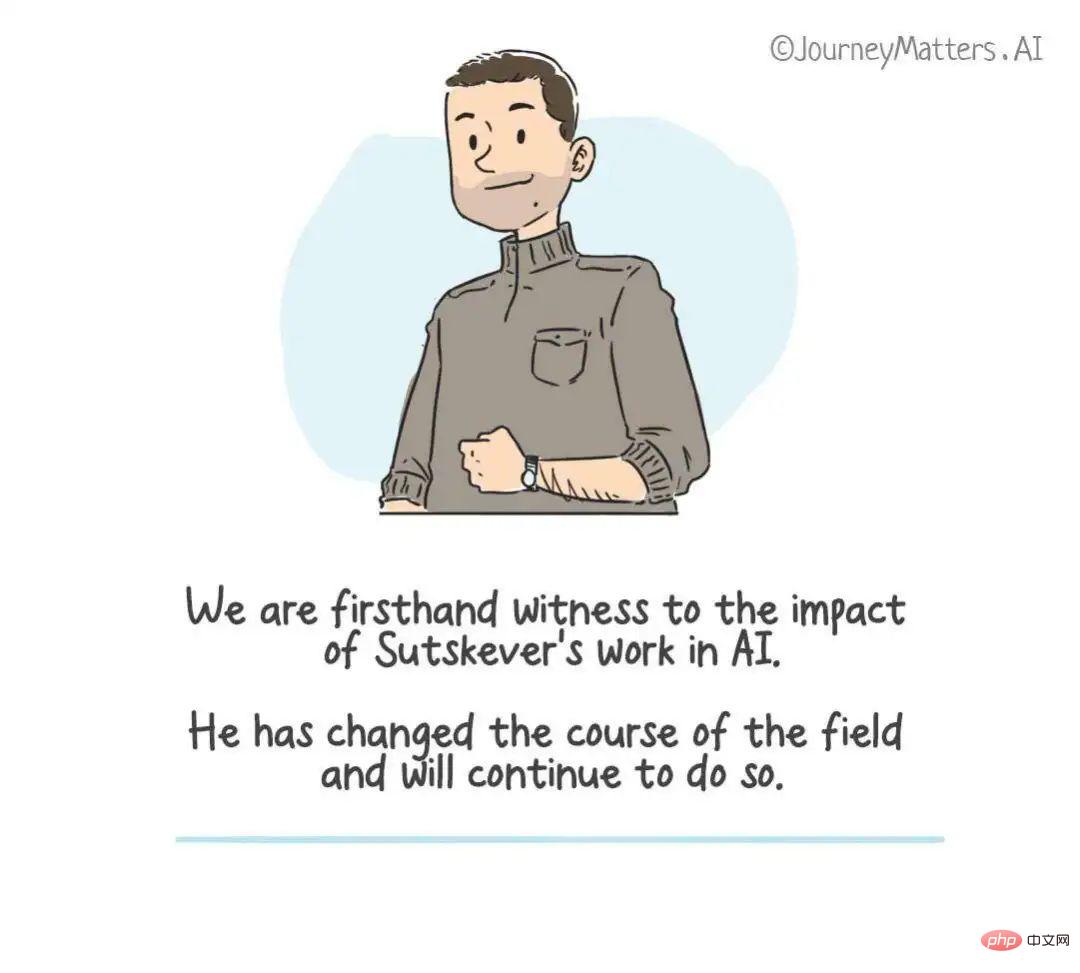
Now we have witnessed the impact Sutskever has had on our world. Obviously, this is just the beginning.
The above is the detailed content of The real hero behind ChatGPT: OpenAI chief scientist Ilya Sutskever's leap of faith. For more information, please follow other related articles on the PHP Chinese website!

Hot AI Tools

Undresser.AI Undress
AI-powered app for creating realistic nude photos

AI Clothes Remover
Online AI tool for removing clothes from photos.

Undress AI Tool
Undress images for free

Clothoff.io
AI clothes remover

Video Face Swap
Swap faces in any video effortlessly with our completely free AI face swap tool!

Hot Article

Hot Tools

Notepad++7.3.1
Easy-to-use and free code editor

SublimeText3 Chinese version
Chinese version, very easy to use

Zend Studio 13.0.1
Powerful PHP integrated development environment

Dreamweaver CS6
Visual web development tools

SublimeText3 Mac version
God-level code editing software (SublimeText3)

Hot Topics
 1386
1386
 52
52
 How to solve the complexity of WordPress installation and update using Composer
Apr 17, 2025 pm 10:54 PM
How to solve the complexity of WordPress installation and update using Composer
Apr 17, 2025 pm 10:54 PM
When managing WordPress websites, you often encounter complex operations such as installation, update, and multi-site conversion. These operations are not only time-consuming, but also prone to errors, causing the website to be paralyzed. Combining the WP-CLI core command with Composer can greatly simplify these tasks, improve efficiency and reliability. This article will introduce how to use Composer to solve these problems and improve the convenience of WordPress management.
 How to solve SQL parsing problem? Use greenlion/php-sql-parser!
Apr 17, 2025 pm 09:15 PM
How to solve SQL parsing problem? Use greenlion/php-sql-parser!
Apr 17, 2025 pm 09:15 PM
When developing a project that requires parsing SQL statements, I encountered a tricky problem: how to efficiently parse MySQL's SQL statements and extract the key information. After trying many methods, I found that the greenlion/php-sql-parser library can perfectly solve my needs.
 How to solve complex BelongsToThrough relationship problem in Laravel? Use Composer!
Apr 17, 2025 pm 09:54 PM
How to solve complex BelongsToThrough relationship problem in Laravel? Use Composer!
Apr 17, 2025 pm 09:54 PM
In Laravel development, dealing with complex model relationships has always been a challenge, especially when it comes to multi-level BelongsToThrough relationships. Recently, I encountered this problem in a project dealing with a multi-level model relationship, where traditional HasManyThrough relationships fail to meet the needs, resulting in data queries becoming complex and inefficient. After some exploration, I found the library staudenmeir/belongs-to-through, which easily installed and solved my troubles through Composer.
 Solve CSS prefix problem using Composer: Practice of padaliyajay/php-autoprefixer library
Apr 17, 2025 pm 11:27 PM
Solve CSS prefix problem using Composer: Practice of padaliyajay/php-autoprefixer library
Apr 17, 2025 pm 11:27 PM
I'm having a tricky problem when developing a front-end project: I need to manually add a browser prefix to the CSS properties to ensure compatibility. This is not only time consuming, but also error-prone. After some exploration, I discovered the padaliyajay/php-autoprefixer library, which easily solved my troubles with Composer.
 How to solve the problem of PHP project code coverage reporting? Using php-coveralls is OK!
Apr 17, 2025 pm 08:03 PM
How to solve the problem of PHP project code coverage reporting? Using php-coveralls is OK!
Apr 17, 2025 pm 08:03 PM
When developing PHP projects, ensuring code coverage is an important part of ensuring code quality. However, when I was using TravisCI for continuous integration, I encountered a problem: the test coverage report was not uploaded to the Coveralls platform, resulting in the inability to monitor and improve code coverage. After some exploration, I found the tool php-coveralls, which not only solved my problem, but also greatly simplified the configuration process.
 How to solve the complex problem of PHP geodata processing? Use Composer and GeoPHP!
Apr 17, 2025 pm 08:30 PM
How to solve the complex problem of PHP geodata processing? Use Composer and GeoPHP!
Apr 17, 2025 pm 08:30 PM
When developing a Geographic Information System (GIS), I encountered a difficult problem: how to efficiently handle various geographic data formats such as WKT, WKB, GeoJSON, etc. in PHP. I've tried multiple methods, but none of them can effectively solve the conversion and operational issues between these formats. Finally, I found the GeoPHP library, which easily integrates through Composer, and it completely solved my troubles.
 How to solve the problem of virtual columns in Laravel model? Use stancl/virtualcolumn!
Apr 17, 2025 pm 09:48 PM
How to solve the problem of virtual columns in Laravel model? Use stancl/virtualcolumn!
Apr 17, 2025 pm 09:48 PM
During Laravel development, it is often necessary to add virtual columns to the model to handle complex data logic. However, adding virtual columns directly into the model can lead to complexity of database migration and maintenance. After I encountered this problem in my project, I successfully solved this problem by using the stancl/virtualcolumn library. This library not only simplifies the management of virtual columns, but also improves the maintainability and efficiency of the code.
 git software installation tutorial
Apr 17, 2025 pm 12:06 PM
git software installation tutorial
Apr 17, 2025 pm 12:06 PM
Git Software Installation Guide: Visit the official Git website to download the installer for Windows, MacOS, or Linux. Run the installer and follow the prompts. Configure Git: Set username, email, and select a text editor. For Windows users, configure the Git Bash environment.



